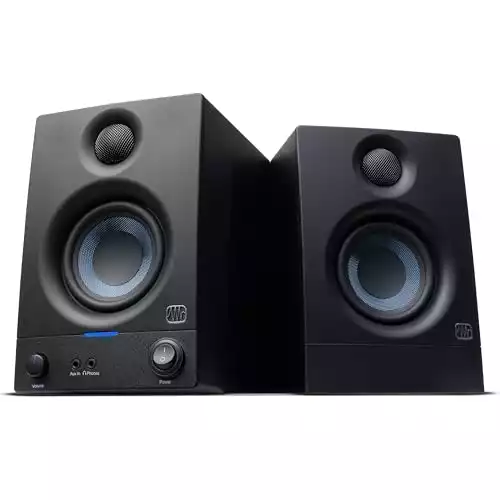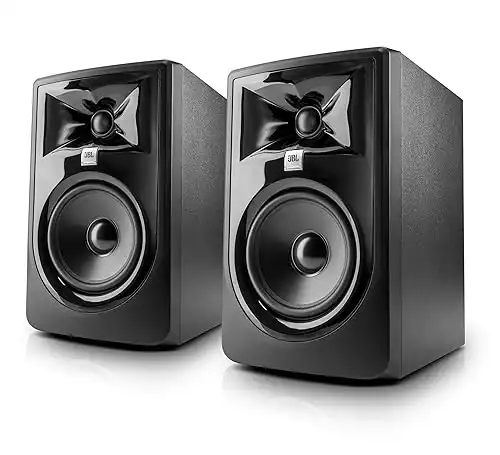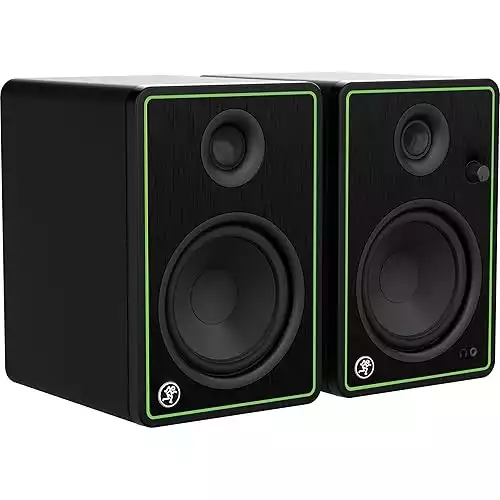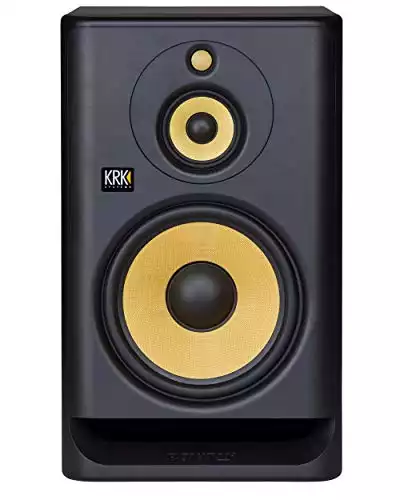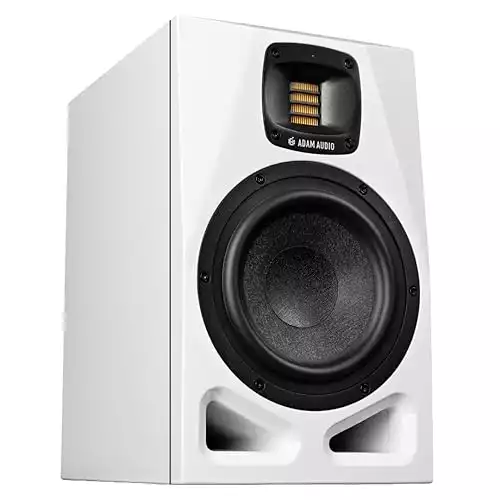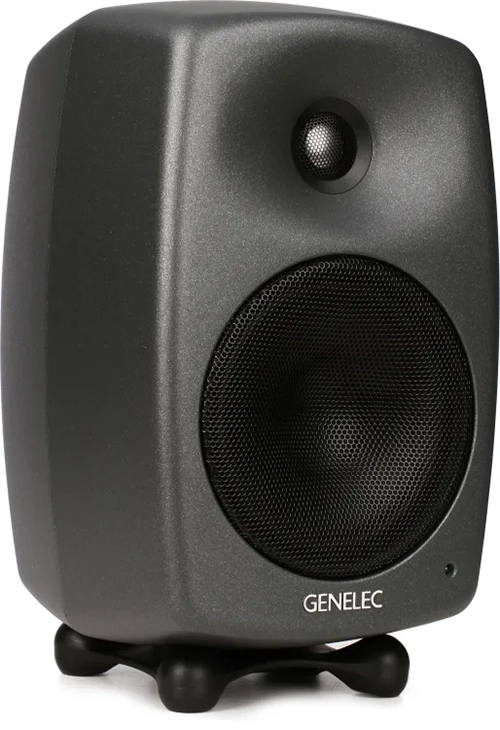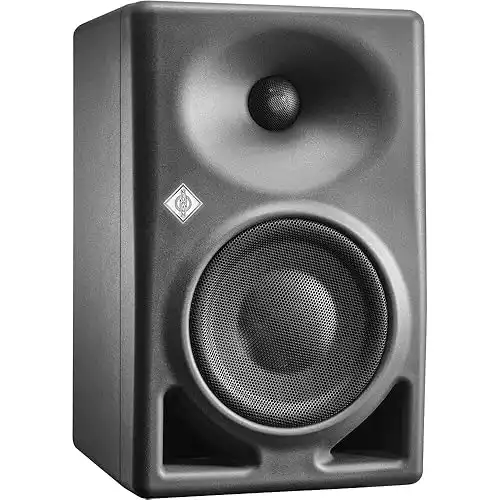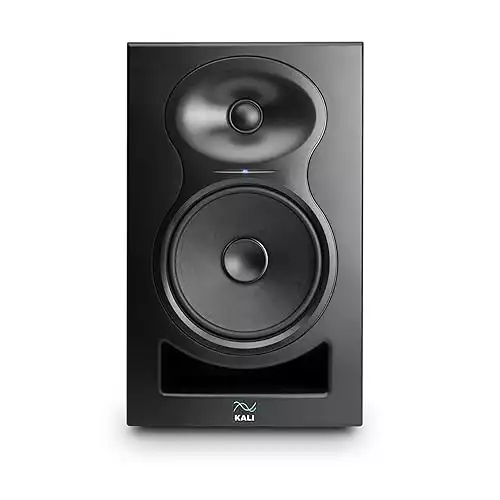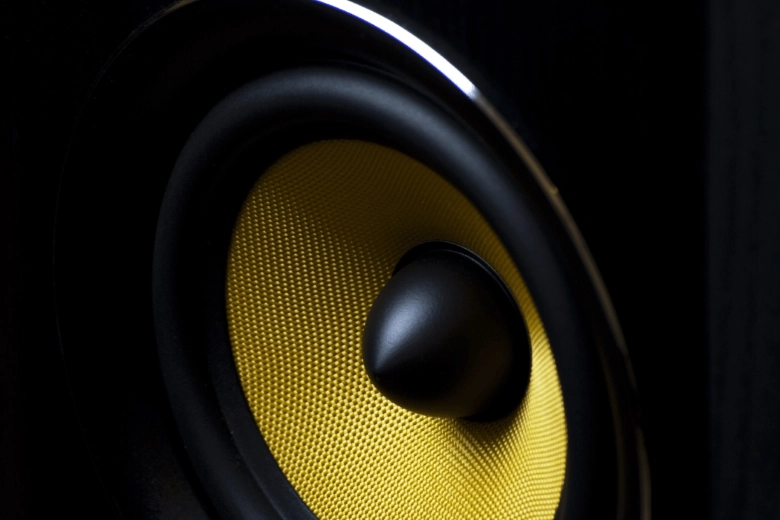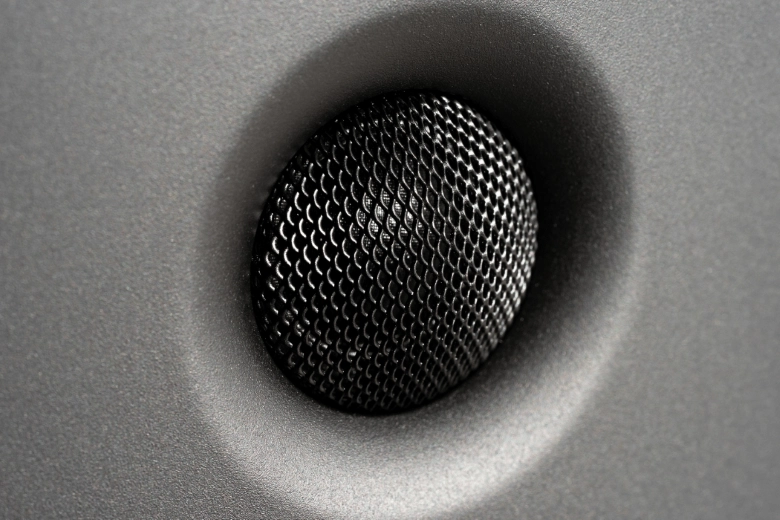When it comes to crafting high-quality audio, having the best studio monitors is essential. Whether you're mixing, mastering, or producing music, studio monitors provide the accurate frequency response you need to make decisions about your sound. With so many options available, choosing the right set of studio monitors can be overwhelming. This guide breaks down the top 10 studio monitors of 2024, offering detailed insights into each model's strengths, features, and performance.
Here’s what you’ll learn in this article:
- How to choose the best studio monitors for your specific needs, whether you're in a small home studio or a professional production environment.
- Detailed reviews of the top studio monitors, outlining the key features, pros, and cons to help you make an informed decision.
- How technology like DSP tuning and room correction can enhance the performance of your monitors in different acoustic environments.
What Are The Best Studio Monitor Speakers?
The best studio monitors are those that provide an accurate, transparent sound, enabling you to hear every detail of your mix. Factors like room size, budget, and the type of music you produce can all influence your choice. From compact monitors for small spaces to powerful, high-end models for professional studios, these options cover a range of needs and budgets.
- PreSonus Eris
- Yamaha HS5
- JBL 305P MkII
- Mackie CR5-XBT
- KRK ROKIT 10-3 G4
- M-Audio BX5 D3
- Adam Audio A7V
- Genelec 8030c
- Neumann KH 120
- Kali Audio LP-6 V2
By the end of this guide, you'll have a clear understanding of which studio monitors are best suited to your setup, allowing you to elevate your sound production to new heights.
Looking for the best budget bookshelf speakers instead? Check out this article.
1. PreSonus Eris
The PreSonus Eris is a compact, powered studio monitor known for delivering accurate audio performance in small spaces. The Eris's compact form factor and versatile inputs make it ideal for a variety of environments, especially where space is limited.
- Compact yet powerful for a small listening environment
- High and low tuning options for room adjustment
- Versatile input options, including RCA and 1/4" TRS
Why Someone Should Buy:
If you're setting up a desktop or small recording studio and need accurate audio playback in a small form factor, the PreSonus Eris is an excellent choice. Its affordable price and versatile connectivity options make it great for beginners and pros alike.
Technical Features:
- Power: 50W (25W per speaker)
- Frequency Response: 80Hz - 20kHz
- Inputs: 1/4” balanced TRS, RCA, 1/8" front-panel input
- Drivers: 3.5" woven composite woofer, 1" silk dome tweeter
- Crossover Frequency: 2.8kHz
Review:
The PreSonus Eris delivers an impressive amount of clarity and balance for its size. Designed for tight workspaces, these monitor speakers don’t compromise on audio quality. They offer a decent frequency range, though the low end doesn't extend as deep as larger monitors.
The tuning controls on the back allow for room adjustment, which is useful when fine-tuning your mix environment. Its versatility is a strong point, with multiple input options and a front headphone jack, making it ideal for multi-purpose setups.
With a 3.5" woven composite woofer and a 1" silk dome tweeter, it offers a clear, reliable frequency response, making it a popular choice for home studios. The built-in 50W class AB amplifier delivers enough power to ensure detailed sound at both low and high volumes.
Verdict:
The PreSonus Eris is one of the best studio monitors for small studios or multimedia setups, at an affordable price. It delivers the kind of transparency you'd expect from higher-end monitors without taking up valuable desk space.
This Studio Monitor is Perfect For:
- Home studio beginners
- Desktop musicians with limited space
- Multimedia creators needing a versatile monitor setup
Critical listening - This one is more of a reminder than a tip. Studio monitors are designed for critical listening, which means they shouldn't artificially enhance the audio in any way. In other words, they don't sugarcoat certain frequencies like hi-fi speakers do to make it sound better. You hear an honest representation of your work; remember that hearing the bad areas is vital in mixing.

2. Yamaha HS5
The Yamaha HS5 is a studio monitor revered for its accuracy and reliability. The HS5 stands out for its ability to deliver a neutral sound, without the colorization you might find in other monitors, making it perfect for precise audio editing.
- Neutral sound reproduction for critical listening
- High-quality build with robust components
- Room control features for optimizing in any space
Why You Should Buy:
If you want to hear your mix as accurately as possible, the Yamaha HS5 offers precision and clarity. It's one of the best studio monitors for professionals looking for flat, neutral sound in any room.
Review:
The Yamaha HS5 offers pristine sound quality with a flat frequency response, making it perfect for those who want to hear every detail in their mix. The built-in room control feature compensates for low-end build up in smaller spaces, ensuring accurate monitoring regardless of your studio's acoustics.
Featuring a 5" woofer and a 1" dome tweeter, this bi-amped speaker provides a flat frequency response, ideal for critical mixing and mastering tasks.
While the bass response might lack punch compared to larger monitors, the HS5 excels in delivering accurate mid and high frequencies, making it a trusted choice.
Verdict:
A workhorse in the studio, the Yamaha HS5 is one of the best studio monitors for professionals who value accuracy over embellishment. Its neutral sound signature and room control options make it one of the best speaker choices for home and project studios.
This Studio Monitor is Perfect For:
- Mixing and mastering engineers
- Studio professionals demanding neutral sound
- Home studios with acoustically treated rooms
3. JBL 305P MkII
The JBL 305P MkII is designed with JBL's patented Image Control Waveguide technology, delivering superior imaging and a broad sweet spot. Its stylish, modern design will look perfect in any room or studio.
- Wide sweet spot with Image Control Waveguide
- Punchy bass with Slip Stream low-frequency port
- High power output for larger spaces
Why You Should Buy:
For those who want powerful bass and a wide sweet spot in a compact form, the JBL 305P MkII is an excellent choice. It excels in delivering detailed sound, making it ideal for larger studios or bass-heavy productions.
Technical Features:
- Power: 82W (41W LF, 41W HF)
- Frequency Response: 49Hz - 20kHz
- Inputs: XLR and 1/4" TRS
- Drivers: 5" woofer, 1" tweeter
Review:
The JBL 305P MkII delivers excellent clarity across the frequency spectrum, particularly excelling in the low-end thanks to its slipstream low-frequency port. The Image Control Waveguide expands the sweet spot, allowing for consistent sound quality even when you're not directly in front of the monitor speakers.
It has a high output, making it suitable for larger rooms, and the built-in EQ controls help adjust the bass response depending on your room's acoustics and studio configurations.
With a 5" woofer and 1" tweeter, it's no wonder this monitor packs a punch in terms of bass response and overall clarity. Its class D amplifiers deliver 82 watts of total power, giving it the dynamic range and volume you need for larger studio environments.
Verdict:
The JBL 305P MkII is the best studio monitor for those who need a wide sweet spot and impressive low-end performance. It's powerful, clear, and adaptable, making it a solid option for both small and large studios.
Looking for a portable PA system instead? Check out our top options.
This Studio Monitor is Perfect For:
- Bass-heavy music production
- Larger studios with wider mixing positions
- Producers seeking detailed imaging and clarity
Good positioning - Studio monitors are directional, which means they don't throw the sound around the room like regular speakers. Form an equilateral triangle between the monitors and your head. The monitors should be the same distance from each other as they are from your head. The high-frequency drivers should be level with your ears.

4. Mackie CR5-XBT
The Mackie CR5-XBT studio monitors offer a great balance between professional sound and multimedia functionality. These 5" powered monitors come with built-in Bluetooth for wireless streaming, making them an excellent choice for both studio work and casual listening.
- Built-in Bluetooth for wireless streaming
- Front-panel controls for convenience
- Great value for both studio and multimedia use
Why You Should Buy:
If you're looking for the best studio monitors that double as versatile multimedia speakers with Bluetooth connectivity, the Mackie CR5-XBT is an excellent choice. Their compact size, ease of use, and Bluetooth streaming make them ideal for hybrid setups.
Technical Features:
- Power: 80W Class D
- Frequency Response: 50Hz - 20kHz (-10dB)
- Inputs: RCA, 1/8", Bluetooth
- LF Driver: 5" Polypropylene-coated woofer
- HF Driver: 0.75" Silk dome tweeter
- Maximum Peak SPL: 105 dB
Review:
The Mackie CR5-XBT delivers studio-quality sound in a compact, user-friendly design. The 5" woofer offers decent low-end punch, while the 0.75" tweeter provides crisp highs, making these suitable for both audio production and casual listening. The front-panel controls, Bluetooth streaming, and a headphone jack make them perfect for desktop use. With a total power output of 80 watts, they provide clear, detailed sound.
While they aren't designed for large studio spaces, the CR5-XBT is an excellent option for multimedia creators and small studio setups.
Verdict:
If you're looking for the best studio monitors that offer studio-grade sound with the added convenience of Bluetooth, the Mackie CR5-XBT is hard to beat at this price point. They're ideal for content creators, gamers, and casual listeners who want both precision and convenience.
This Studio Monitor is Perfect For:
- Multimedia production and content creation
- Home studios with limited space
- Casual listening with wireless streaming options
5. KRK ROKIT 10-3 G4
The KRK ROKIT 10-3 G4 is a high-end, three-way studio monitor designed for professionals who demand accurate sound reproduction across the entire frequency range. Whether you're working on mixing, mastering, or production, the ROKIT 10-3 G4 is built to deliver pro-level results.
- Three-way design for precise sound across the frequency spectrum
- Built-in DSP with room correction and LCD visual EQ
- Powerful low-end response with front-firing bass port
Why You Should Buy:
If you’re looking for a versatile, three-way monitor with outstanding low-end and advanced room correction features, the KRK ROKIT 10-3 G4 is a top contender. It offers professional-grade performance with advanced DSP controls for precise monitoring.
Technical Features:
- Power: Class D
- Frequency Response: 26Hz - 40kHz
- Drivers: 10" Kevlar woofer, 4.5" Kevlar midrange, 1" Kevlar tweeter
- DSP: Room correction, LCD visual EQ
- Inputs: XLR, TRS
- Maximum SPL: 112 dB
Review:
The KRK ROKIT 10-3 G4 is a powerhouse when it comes to studio monitors, designed to handle even the most demanding audio production tasks. Its three-way design ensures a well-balanced sound with clear mids and sparkling highs, while the 10" woofer provides deep, controlled bass.
The built-in DSP and LCD visual EQ are great for room correction and allow for fine-tuning your sound for different environments. These features make the ROKIT 10-3 G4 one of the most versatile monitors on the market, capable of handling everything from bass-heavy music production to detailed mastering.
Verdict:
The KRK ROKIT 10-3 G4 is one of the best studio monitors for professionals seeking a premium, three-way studio monitor with room correction capabilities. Its advanced DSP, wide frequency range, and robust build quality make it a favorite among engineers and producers who need accuracy across the entire sound spectrum.
This Studio Monitor is Perfect For:
- Professional audio engineers and producers
- Studios needing advanced room correction and EQ controls
- Bass-heavy music production, mixing, and mastering
6. M-Audio BX5 D3
The M-Audio BX5 D3 is a powerful, budget-friendly studio monitor featuring a 5" Kevlar woofer and a 1" silk dome tweeter. With 100 watts of bi-amplified power and a frequency response that extends from 52Hz to 35kHz, it delivers detailed sound with excellent imaging.
- Detailed sound with deep bass response
- Acoustic Space Control for room adjustments
- Affordable price for high-quality performance
Why You Should Buy:
If you're looking for an affordable studio monitor with precise sound and excellent low-end response, the M-Audio BX5 D3 is a strong contender. It’s ideal for home studio setups and those looking for a cost-effective solution without compromising on quality.
Technical Features:
- Power: 100W (60W LF, 40W HF)
- Frequency Response: 52Hz - 35kHz
- Drivers: 5" Kevlar woofer, 1" silk dome tweeter
- Crossover Frequency: 2.5kHz
- Inputs: Balanced XLR, 1/4" TRS
Review:
The M-Audio BX5 D3 offers a lot of value for its price, delivering accurate sound and strong bass performance. Its Kevlar woofer ensures low-distortion sound, and the silk dome tweeter provides crisp highs.
The rear-mounted bass port adds to the overall depth of the sound, giving you a more complete listening experience. With acoustic space control, you can adjust the monitor's sound to suit your room, making it flexible for different setups.
While the BX5 D3 might not compete with higher-end models in terms of advanced features, it’s an excellent choice for home studio users.
Verdict:
For the price, the M-Audio BX5 D3 is hard to beat. Its solid low-end performance, detailed mids, and highs, combined with its room adjustment features, make it a versatile and affordable choice for beginner and intermediate producers.
This Studio Monitor is Perfect For:
- Home studio setups
- Budget-conscious producers looking for great value
- Multimedia creators needing accurate sound at a lower price point
7. Adam Audio A7V
The Adam Audio A7V is a professional-grade 2-way powered studio monitor, ideal for project studios and smaller control rooms. It features a 7-inch woofer alongside this brand's innovative X-ART ribbon tweeter, delivering exceptional clarity and accuracy across the frequency spectrum.
- X-ART ribbon tweeter for superior high-frequency response
- DSP tuning for customized room-matching
- Powerful 2-way design with a newly designed 7-inch woofer
Why You Should Buy:
The A7V offers precision and clarity with its ribbon tweeter technology and powerful DSP tuning, making it perfect for those seeking high-quality, customizable sound in smaller spaces. Its vertical orientation ensures excellent imaging for a wide variety of applications.
Technical Features:
- Power: Bi-amped drivers
- Frequency Response: 41Hz – 42kHz
- Drivers: 7-inch woofer, X-ART ribbon tweeter
- DSP: Built-in for room tuning
Review:
The A7V is known for its meticulous attention to detail and cutting-edge features. The X-ART ribbon tweeter ensures crisp highs, while the 7-inch woofer provides punchy mids and lows.
The inclusion of DSP room correction makes these monitors highly adaptable to any studio environment, from small home setups to professional studios. The vertical orientation is practical for most setups, offering accurate imaging and soundstage.
Verdict:
For professional audio engineers and producers who prioritize precision and adaptability, this studio monitor is an excellent choice. The combination of ribbon tweeter technology and DSP-based tuning sets these monitors apart in their class.
We love finding speakers on a budget, but we also have high-end options, too!
This Studio Monitor is Perfect For:
- Professional audio engineers and producers
- Small to medium-sized project studios
- Users needing customizable room tuning features
8. Genelec 8030c
The Genelec 8030c is a compact, bi-amplified studio monitor designed for near-field monitoring in smaller studio spaces. Featuring a 5-inch woofer and 0.75-inch metal dome tweeter, the 8030c delivers a balanced and clear sound with minimal distortion.
- Compact size without sacrificing sound quality
- High-powered bi-amplification for low distortion
- Innovative waveguide for accurate imaging
Why You Should Buy:
If you're looking for a small, reliable near-field monitor with excellent clarity and bass response, the Genelec 8030c is a great option. Its compact size and versatility make it suitable for project studios, editing suites, or mobile setups.
Technical Features:
- Power: 100W Class D (50W LF, 50W HF)
- Frequency Response: 54Hz - 20kHz
- Drivers: 5-inch woofer, 0.75-inch metal dome tweeter
- Maximum Peak SPL: 104 dB SPL @ 1m
Review:
The Genelec 8030c is a compact powerhouse, delivering detailed sound and remarkable bass for its size. The 5-inch woofer offers impressive low-end extension, while the metal dome tweeter ensures clean highs.
Its minimum diffraction enclosure and directivity control waveguide optimize sound for smaller environments, creating an immersive, three-dimensional listening experience. Its rugged design and versatile mounting options also make it highly durable and flexible.
Verdict:
The Genelec 8030c is ideal for smaller studios or workstations requiring professional-grade nearfield monitoring. It delivers clear, detailed audio with excellent imaging and bass, all packed in a compact, durable design.
This Studio Monitor is Perfect For:
- Small project studios or mobile setups
- Audio engineers working in limited space
- Professionals needing high-quality nearfield monitoring
9. Neumann KH 120
The Neumann KH 120 is a bi-amplified, nearfield studio monitor that delivers high SPL capabilities and excellent sound precision. Known for its razor-sharp imaging and extended bass down to 44Hz, the KH 120 is perfect for professional studios requiring precise monitoring.
- High SPL capability with extended bass
- DSP-based room alignment and automatic calibration
- Razor-sharp imaging with minimal distortion
Why You Should Buy:
If you're seeking professional-grade monitors with high SPL output and room correction, the Neumann KH 120 is an outstanding choice. Its advanced DSP tuning and premium build quality make it suitable for demanding audio production tasks.
Technical Features:
- Power: 245W (145W LF, 100W HF)
- Frequency Response: 44Hz - 21kHz (±3 dB)
- Drivers: 5.25-inch woofer, 1-inch tweeter
- DSP: Built-in for room correction
- Maximum Peak SPL: 116.8 dB SPL
Review:
The Neumann KH 120 stands out for its precision and power, delivering incredibly detailed sound across the frequency spectrum. The high SPL output ensures these studio monitor speakers can handle even the most demanding sessions, while the built-in DSP engine allows for automatic room calibration, ensuring optimal sound in any environment. The KH 120 also boasts excellent bass extension and clear highs, making it a versatile tool for mixing and mastering.
Featuring a 5.25-inch woofer and 1-inch tweeter, these studio monitors have accurate performance in any environment.
Verdict:
With its DSP engine and high SPL capabilities, the Neumann KH 120 is ideal for professional studios that require detailed sound and flexibility. Its advanced features make it perfect for mixing and mastering.
This Studio Monitor is Perfect For:
- Professional studios and audio engineers
- Producers requiring high SPL output and room calibration
- Critical listening environments like mixing and mastering suites
10. Kali Audio LP-6 V2
The Kali Audio LP-6 V2 is a 6.5-inch powered studio monitor that delivers impressive clarity and flat frequency response at an affordable price point. Its cutting-edge waveguide design provides a wide soundstage with detailed imaging, while the Boundary EQ enables users to fine-tune the speaker to suit their specific room setup.
- Flat frequency response with minimal distortion
- Wide soundstage with cutting-edge waveguide design
- Boundary EQ for room-specific tuning
Why You Should Buy:
For those looking for a budget-friendly studio monitor that doesn’t compromise on sound quality, the Kali Audio LP-6 V2 offers excellent value. Its clear, detailed sound and room tuning features make it an ideal choice for home studios and budget-conscious producers.
Technical Features:
- Power: Class D with 6.5-inch woofer, 1-inch soft-dome tweeter
- Frequency: Flat, full range
- Distortion: Negligible levels, up to 6dB lower than competitors
- Inputs: Balanced XLR, TRS, unbalanced RCA
Review:
The Kali Audio LP-6 V2 punches above its weight in terms of sound quality, offering low distortion, making it a fantastic studio monitor for mixing and producing music. The wide soundstage and precise imaging are standout features, helping users make accurate decisions during production.
The LP-6 V2 features a 1-inch soft-dome tweeter and a class D power amp that ensures minimal distortion, even at high volumes. The Boundary EQ allows you to adjust the sound based on your room acoustics, ensuring accurate monitoring in a variety of setups.
Verdict:
For the price, the LP-6 V2 studio monitor offers an impressive balance of clarity, power, and flexibility. It’s a great choice for home studios and budget-conscious producers who still want professional-level sound quality.
This Studio Monitor is Perfect For:
- Home studio electronic music producer on a budget
- Mixing and music production with accurate sound
- Users needing adjustable room EQ for optimal monitoring
Monitor stands or isolation pads - It's not the best idea to sit your studio monitors directly on your desk. If you do, the vibrations will pass from your monitors through your desk, and you won't get the best out of them. The solution is to buy some decent monitor stands or even some cheap isolation pads.

Buyer's Guide: Choosing the Right Studio Monitors
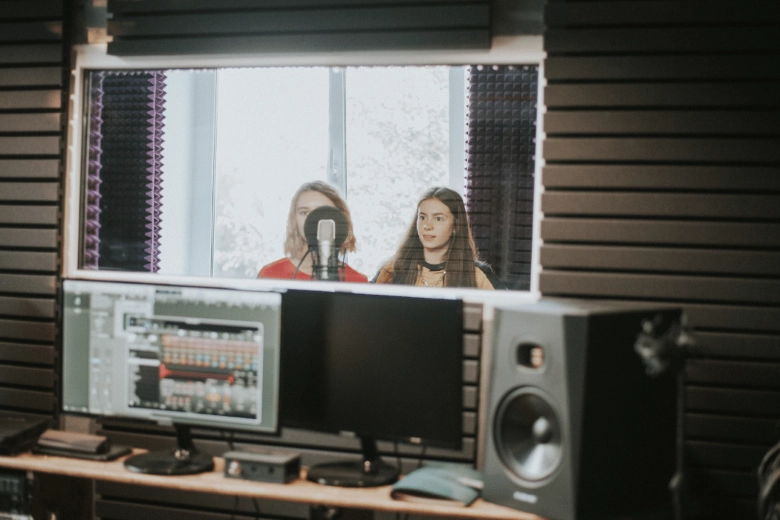
When selecting the right studio monitors for your audio production setup, several factors come into play. It’s essential to understand the difference between various types of monitors, their role in different genres, and how your room setup impacts your listening experience.
Below, we dive into the key considerations you need to keep in mind to purchase professional studio monitors that will elevate your production.
Active vs. Passive Monitors
Understanding the difference between active monitors and passive speakers is critical when choosing the right studio monitors for your setup.
Active Monitors: These are powered studio monitors, meaning they come with built-in amplifiers. Each driver (woofer and tweeter) has its own dedicated amp, resulting in a balanced and accurate sound. Most modern studio monitors are active, and they are highly favored in professional settings for their convenience and superior performance.
Advantages include:
- No need for an external amplifier
- Simplified setup
- Typically better sound balance between drivers due to built-in amplification
- Ideal for smaller setups and those who prefer minimal gear
Passive Speakers: These require an external amplifier to function. They offer flexibility in terms of choosing your preferred amplifier, but they’re generally less convenient and require more components. Passive monitors are often found in older setups or hi-fi audio systems.
Advantages include:
- The ability to select and match amplifiers based on personal preferences
- Flexibility in upgrading separate components
For most stereo monitors and professional studio environments, active monitors are the go-to choice due to their ease of use and superior integration of amplifiers.
Understanding Frequency Response and Bass Frequencies
One of the most important specs to consider when choosing powered studio monitors is their frequency response, and especially how they handle bass.
Low-End/Bass Frequencies: If your productions rely on deep bass (common in electronic music production, hip-hop, or cinematic scores), you’ll need monitors that can accurately reproduce those low frequencies. Larger drivers (like 8 or 10-inch woofers) can handle bass better, but they may also require a subwoofer for a more extended low-end response.
Subwoofers: If your monitors are struggling with the lower end, a dedicated subwoofer can help with bass, especially in large rooms. However, subwoofers should be used with caution, as they can introduce unwanted phase issues or exaggerate the low-end if not placed correctly.
Mid and High Frequencies: Monitors like the Adam Audio A7V with its X-ART ribbon tweeter excel at reproducing high frequencies with precision, ensuring clear and crisp sounds. This is especially important for mixing vocals and acoustic instruments.
Key Takeaway: Choose monitors with a frequency range that covers the bass frequencies you work with, especially if you're producing electronic music or any genre requiring powerful low-end reproduction.
Listening Position and Sweet Spot
Your listening position and how you set up your studio monitors play a huge role in the accuracy of your sound. You should carefully consider the position and angle of your monitors to achieve the best stereo imaging and frequency response.
The Sweet Spot: Most high quality studio monitors are designed to create an optimal listening area, known as the “sweet spot,” where you’ll hear the most accurate stereo image. Monitors like the JBL 305P MkII have a wide sweet spot due to their patented Image Control Waveguide, allowing for greater flexibility.
Monitor Placement: Position your monitors at ear level, angled towards your listening position to form an equilateral triangle between you and the monitors. This ensures you’re hearing the sound as it’s intended, with balanced frequencies across the spectrum.
Nearfield Monitors: Most stereo monitors used in studios are nearfield monitors, meaning they are designed to be listened to from a short distance (around 3 to 6 feet). Examples include the Yamaha HS5 and Genelec 8030c, which are known for their precision when placed in a nearfield position.
Monitor Height and Distance: Monitors should be placed so the tweeters are at the same height as your ears. Additionally, ensure the monitors aren’t placed directly against walls, as this can lead to unwanted bass buildup and reflections.
Proper placement and positioning of your monitors are essential for achieving accurate sound.
Room Acoustics and DSP Tuning
The acoustic properties of your studio will affect how your monitors sound, especially the low-end. Untreated rooms can cause problems like bass frequencies being either exaggerated or diminished, leading to inaccurate mixes.
Room Treatment: Acoustic panels, bass traps, and diffusers can help control unwanted reflections and standing waves. Without treatment, even the best quality studio monitors can produce skewed results.
Monitors with DSP Tuning: Some monitors come equipped with DSP (Digital Signal Processing) features, which allow the monitors to automatically adjust to the acoustics of your room. This is especially useful for small or irregularly shaped rooms where acoustic treatment might not be enough.
For the most accurate sound, you’ll need to either acoustically treat your room or invest in monitors with DSP tuning that can compensate for room anomalies.
Connectivity: Matching Monitors with Your Audio Interface
The connection between your studio monitors and your audio interface is another crucial aspect of your setup. Most active monitors feature balanced inputs like XLR or TRS, which reduce noise and ensure clean audio signals.
Balanced vs. Unbalanced: Balanced inputs (XLR or TRS) are preferable for studio use, as they provide noise rejection over longer cable runs. Monitors like the Kali Audio LP-6 V2 come with balanced XLR and TRS inputs, making them a good match for professional audio interfaces.
Audio Interface Compatibility: Ensure your audio interface supports balanced outputs for optimal performance. Additionally, consider how many inputs you need if you're running multiple monitors or other audio gear.
Invest in monitors with balanced XLR or TRS inputs and make sure your interface is compatible to avoid signal degradation and noise issues.
Stereo vs. Surround Sound Monitoring
While most studio setups use stereo monitors, some advanced setups may require multi-speaker configurations for immersive sound, especially in film or video game production.
Stereo Monitors: These monitors are typically sufficient for production. Ensuring accurate left-right imaging and balance is the primary goal, and monitors like the Genelec 8030c excel at creating a clear stereo field.
Surround Sound Setups: If you’re working in sound design or post-production, you may need to expand to 5.1 or 7.1 setups. Monitors like the Neumann KH 120 can be part of a larger system that supports surround sound mixing.
For most music and mixing tasks, stereo monitors are the standard. However, if you’re in post-production or sound design, consider monitors that integrate well into a surround sound setup.
Frequently Asked Questions: Studio Monitor Guide
What is the best brand for studio monitors?
There isn’t a single "best" brand, as the right choice depends on your specific needs and budget. However, some brands are renowned for their consistent quality and performance in professional audio settings:
- Yamaha - Known for the HS series, these monitors are praised for their flat, neutral sound.
- KRK - The Rokit series is loved by producers for its bass-heavy sound and advanced features, making it suitable for electronic music.
- Genelec - These monitors are known for their pristine clarity, compact designs, and professional-grade performance.
- Neumann - The KH series offers exceptional accuracy and DSP-based room correction, making them a top choice for professionals.
Ultimately, the best brand is one that fits your specific needs, whether it’s sound accuracy, room compatibility, or budget.
Which studio monitors are best for mixing and mastering?
When it comes to mixing and mastering, accuracy and transparency are crucial. Some of the top choices include:
- Yamaha HS5 - Famous for its flat response, this monitor is ideal for mixing, as it doesn’t color the sound, ensuring you hear every detail as it is.
- Neumann KH 120 - With its high SPL capabilities and DSP-based room correction, this monitor offers precision that is essential for mastering.
- Adam Audio A7V - Equipped with DSP tuning and X-ART ribbon tweeters, it provides exceptional clarity, making it perfect for mixing and mastering high frequencies.
- Genelec 8030c - Known for delivering clear, detailed sound with minimal distortion, this monitor is ideal for listening during mastering.
These monitors are designed for professional use, ensuring that you hear an accurate representation of your mix across the entire frequency spectrum.
How do I know what studio monitors to buy?
Choosing the right studio monitors depends on several factors:
- Room Size - If you’re working in a small room, a smaller woofer size (5-inch) will suffice. For larger spaces, monitors with larger drivers will deliver more low-end and volume.
- Type of Music - If you produce bass-heavy music (like hip-hop or EDM), monitors with good low-end response are ideal. For more balanced sound genres (rock, jazz), look for monitors with midrange and high-frequency clarity.
- Budget - Entry-level monitors offer good sound at an affordable price, making them suitable for beginners. Higher-end models offer advanced features for professionals but come at a higher cost.
- Room Treatment - If your room isn’t acoustically treated, consider monitors with DSP tuning or room correction features. These will help compensate for room anomalies.
By considering these factors, you can narrow down your choices and select a monitor that suits your studio setup and production needs.
Conclusion
By considering these expert-level factors, you can make a decision about which studio monitors are right for your setup. Whether you're producing electronic music, mixing audio for films, or simply looking for good studio monitors for your home studio, choosing the right pair can greatly enhance the accuracy and quality of your work.
If you liked this review, please leave a positive rating:

